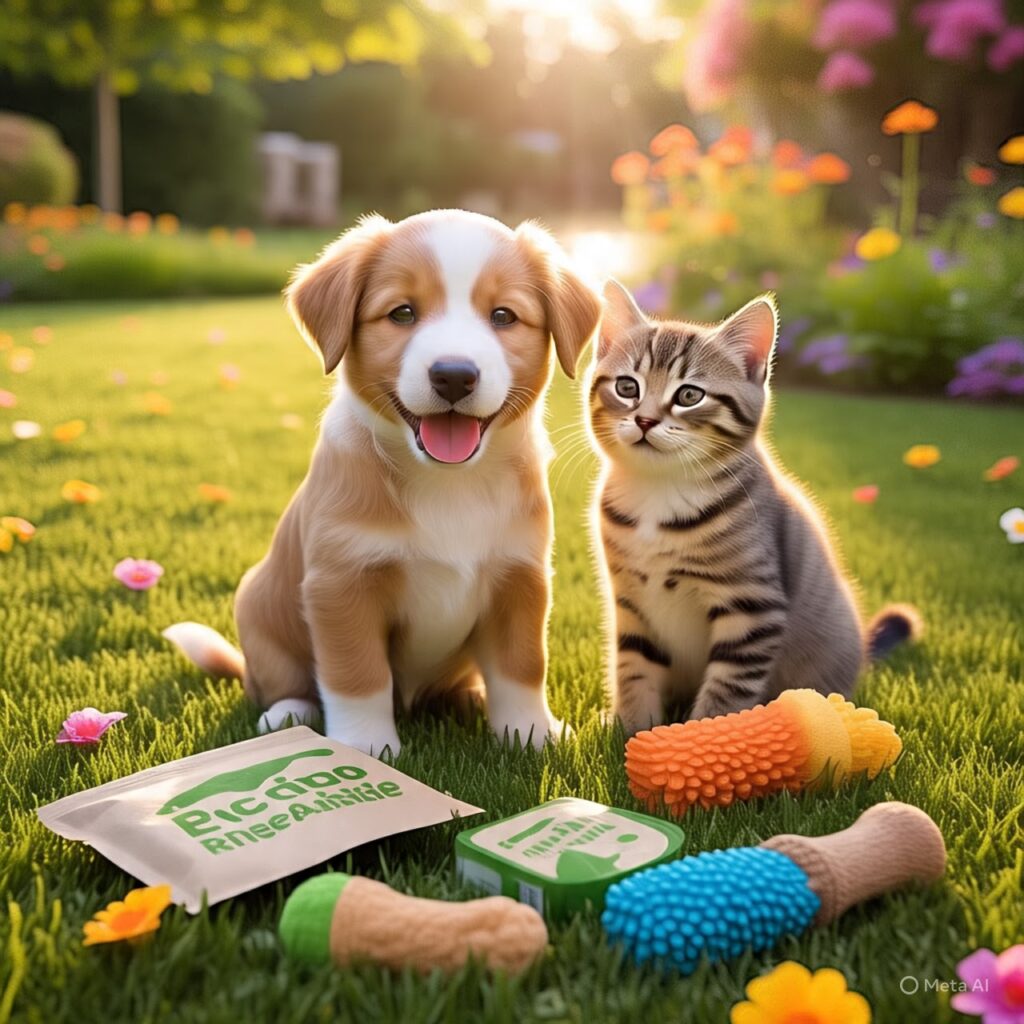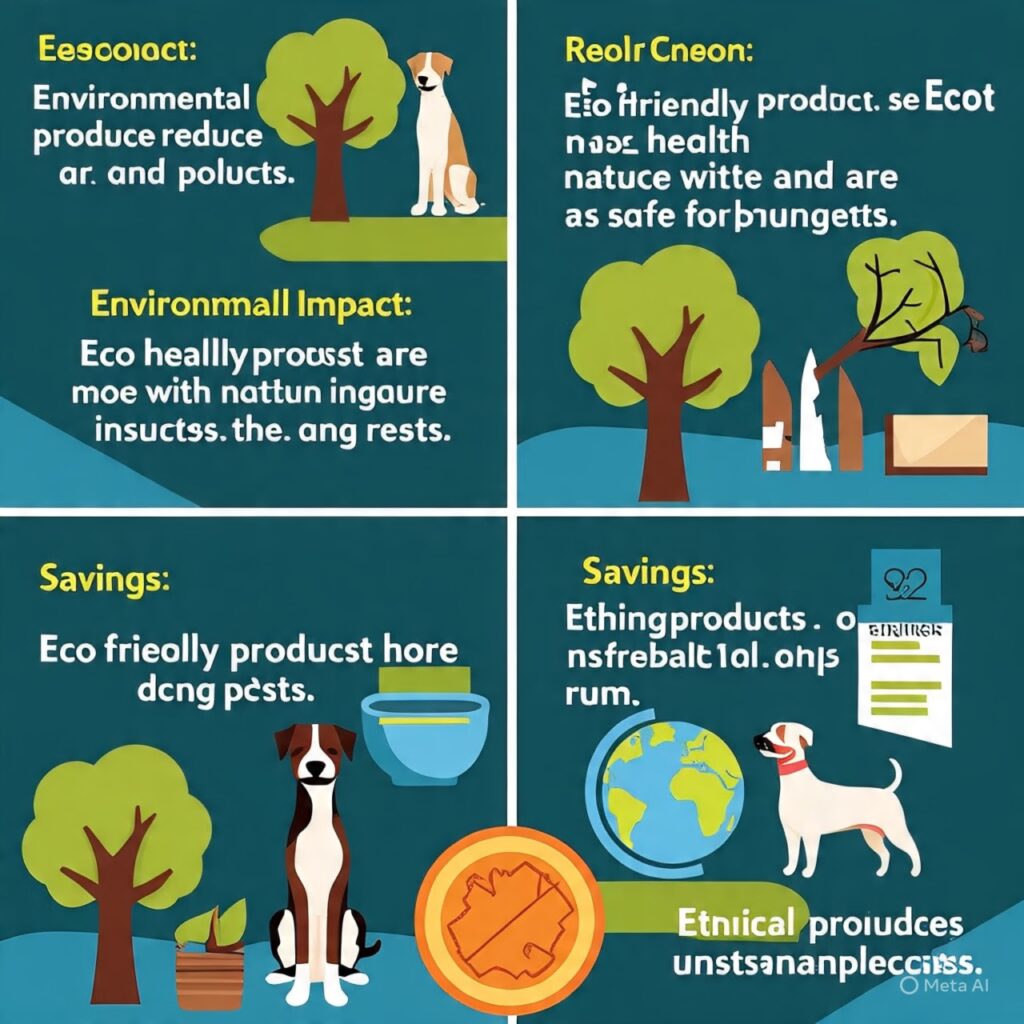
Eco-Friendly or Just a Label?
These days, many pet brands claim to be “eco-friendly.” But how do you really know if a product is good for the planet—or just greenwashed marketing?
If you’re a dog or cat parent in the U.S. who cares about the environment, you’re not alone. More Americans are turning toward biodegradable, non-toxic, and recyclable pet items to reduce their carbon pawprint.
This article gives you a simple checklist to help you understand what actually makes a pet product truly eco-friendly—and what to look for before you buy. Bamboo vs plastic pet bowls,
Why Eco-Friendly Pet Products Are the Future of Pet Care
Infographic: The Eco-Friendly Pet Product Checklist
> (You can turn the following checklist into an infographic later for visual use.)

Eco-Friendly Pet Product Checklist
Feature
Why It Matters
| Biodegradable Materials | Breaks down naturally without harming nature |
| Non-Toxic & Chemical-Free | Safe for pets to chew or lick |
| Recyclable or Upcycled | Reduces landfill waste |
| Sustainably Sourced | Uses renewable or low-impact resources |
| Plastic-Free or Low Plastic | Cuts down plastic pollution |
| Minimal or Recycled Packaging | Eco-conscious from product to box |
| Ethical Production | Fair wages, no animal testing, and clean energy use |
| Made Locally (USA) | Reduces shipping emissions |
| Long-Lasting & Durable | Fewer replacements, less waste |
| Certifications | Look for USDA Organic, GOTS, FSC, or similar labels |
1. Biodegradable Materials
This is the #1 feature to look for. Biodegradable products naturally break down in the environment without leaving harmful chemicals behind. This is especially important for poop bags, pet wipes, grooming tools, and even toys.
Examples:
Poop bags made from cornstarch
Wool or hemp-based chew toys
Plant-fiber cat litter
2. Non-Toxic & Chemical-Free
Dogs and cats love to chew, lick, and bite. That’s why it’s vital to choose items made without toxic dyes, BPA, phthalates, or harmful glues. If a product isn’t non-toxic, it may harm your pet’s health.
Look for labels that say:
BPA-Free
Certified Non-Toxic
Natural Dyes or Plant-Based Inks
3. Recyclable or Upcycled Materials
Many eco-brands use recycled plastic, cotton, or rubber to create toys, beds, collars, and more. Some even upcycle materials (like old bicycle tires or denim) to create new pet gear.
This helps reduce landfill waste and gives existing materials a second life.
4. Sustainably Sourced Ingredients
If you’re buying food, shampoo, or grooming products, check where the ingredients come from. Eco-friendly brands focus on sustainable farming, organic herbs, and cruelty-free oils.
Key tip: Avoid palm oil or unsustainable fish sources unless clearly certified.
5. Plastic-Free or Low-Plastic Designs
Plastic is one of the top polluters globally. Eco-friendly pet products use alternatives like:
Bamboo
Hemp
Recycled paper
Silicone (in some cases, it’s safer and more durable than plastic)
Especially look for: Toys, bowls, and treat containers made from natural fibers.
6. Minimal or Recycled Packaging
Even if the product is green, its packaging might not be. Try to support companies that use recycled, compostable, or zero-waste packaging. Avoid plastic wrap and excess cardboard.
7. Ethical Manufacturing
Eco-friendliness isn’t just about materials—it’s also about people and processes. Ethical brands use:
Fair labor practices
Renewable energy in factories
No animal testing
This ensures the product is good for the planet and for the people who make it.
8. Locally Made in the USA
Products made in the U.S. have a lower carbon footprint due to shorter shipping distances. Plus, you’re supporting local businesses and jobs.
Extra benefit: You can often trust U.S.-based regulations and safety standards more than overseas factories.
9. Long-Lasting = Less Waste
Durable items don’t need to be replaced as often. That means less manufacturing, less shipping, and less waste overall.
Choose:
Chew-resistant toys
Machine-washable beds and blankets
Stainless steel bowls
10. Certifications You Can Trust
Some of the most reliable eco-labels to look for include:
USDA Organic
Global Organic Textile Standard (GOTS)
Forest Stewardship Council (FSC)
Certified B Corporation
Cruelty-Free or Leaping Bunny
These third-party certifications ensure the brand meets real sustainability standards—not just empty words.
Creating a Healthier Planet with Eco-Friendly Pet Solutions
Final Thoughts: Ask Questions, Read Labels
Eco-friendly pet products are more than just a trend—they’re a lifestyle choice that reflects care for your pets and the planet.
Before adding something to your cart, pause and ask:
Is this biodegradable, non-toxic, or recyclable?
Does the brand support sustainability, or just say it?
Will this last, or break in a week?
Call to Action:
Want to shop eco-responsibly?
Check out our curated list of biodegradable and recyclable pet items here:
[Shop Sustainable Pet Products – Affiliate link]
If you want, I can now generate:
